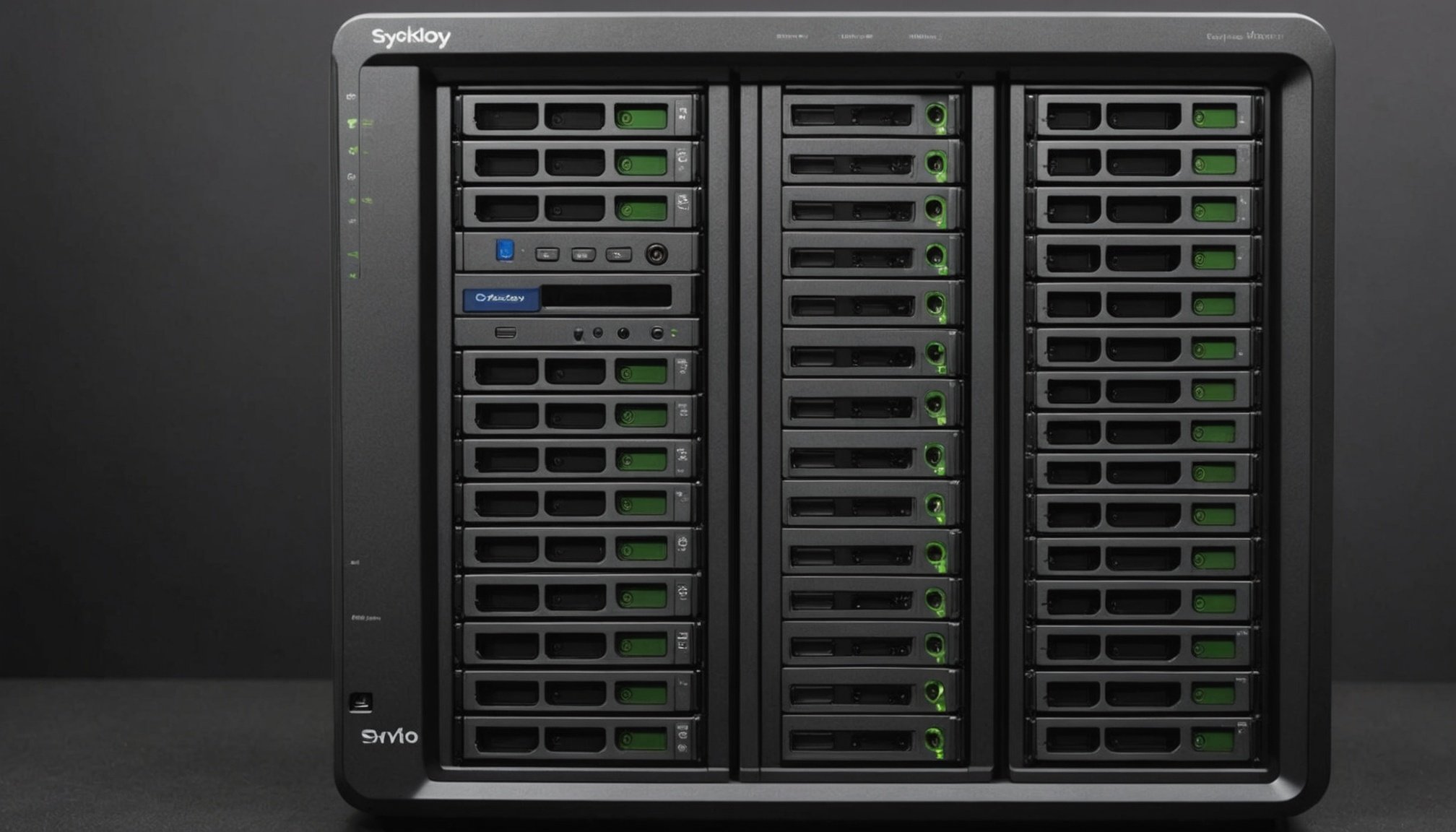Understanding RAID 0 and Its Benefits for Video Editing
RAID 0, commonly used for video editing optimization, offers unique benefits by distributing data across multiple disks. This configuration enhances read and write speeds by striping data blocks, making systems like the Synology DS1621+ an ideal choice for video editing. When compared to other RAID configurations, RAID 0 stands out for its raw speed but lacks redundancy.
The primary advantage for editors is the swift access to and transfer of large video files, essential for smooth playback and rendering. This speed advantage is due to each disk working in tandem, delivering improved performance without storing duplicate data. RAID 0 is attractive if maximizing data throughput is critical. However, an inherent risk is the loss of entire datasets if one drive fails, as RAID 0 doesn’t offer data protection through duplication.
In parallel : Turbocharge your lenovo thinkpad x1 extreme for flawless vmware workstation virtual machine performance
In contrast, other RAID levels, like RAID 1, provide data redundancy at the cost of speed, while RAID 5 offers a balance of performance and fault tolerance. Such distinctions emphasize RAID 0’s suitability for workflows prioritizing speed over security. For professionals utilizing setups like the Synology DS1621+, understanding these trade-offs is crucial in optimizing their video editing processes.
Setting Up a RAID 0 Array on Synology DS1621+
Before embarking on a RAID 0 setup for your Synology DS1621+, understanding the necessary hardware is crucial. You’ll need at least two matching hard drives to begin the setup. Each drive should have similar capacity and speed to optimise performance and ensure reliability within the array. This selection is vital as the RAID 0 configuration focuses on striping, which enhances speed but lacks redundancy.
Also read : Ultimate handbook for configuring a fast and secure vpn on your asus rt-ax86u router
The next step involves the Synology configuration through the DiskStation Manager (DSM). Begin by accessing DSM and navigating to the Storage Manager. Here, you’ll initiate the NAS setup, choosing RAID 0. Follow the wizard’s prompts carefully to avoid mishaps. Remember, Synology configuration can be intricate, so attention to detail will guard against errors.
When selecting disks for your NAS setup, always prefer new, enterprise-grade drives. They promise durability and consistent performance. During the initial setup, a good practice is to label each disk slot, aiding future maintenance endeavors. Consider establishing a monitoring routine for disk health; such scrutiny can preempt potential issues, improving the overall lifespan of your RAID 0 array on the DS1621+.
By adhering to these guidelines, you can assure a seamless and effective setup.
Essential Hardware and Software Considerations
Choosing the right components for your Synology DS1621+ hardware setup is crucial for optimal performance. To maximise RAID 0 performance, consider using recommended drives. These drives should be chosen based on their reliability and speed, ensuring they can handle the data flow without bottlenecks. Fast and reliable drives are necessary to avoid any performance lags during intensive tasks like video editing.
In terms of software requirements, it’s essential to have the right tools for managing RAID configurations. This includes Synology’s own DiskStation Manager (DSM) software, which provides all the necessary features to manage configurations efficiently. Additionally, if video editing is your primary use, ensure you have editing software that’s compatible and well-supported by the DS1621+.
Network setup is also a critical factor in performance optimization. The integration of a high-speed network ensures data transfer speeds remain consistent and fast, preventing delays during data-intensive operations. Consider leveraging a gigabit or higher speed network connection to maintain smooth operations. Such network setups are critical for transferring large video files without hitches, thus enhancing productivity and efficiency.
Managing Data and Ensuring Data Integrity
In our digital world, data integrity is paramount. Understanding the risks associated with RAID 0 is crucial for effective data management. While RAID 0 offers increased performance, it carries significant risks; one drive failure leads to complete data loss. Prioritise robust backup strategies to safeguard data integrity in such configurations. Consider implementing a 3-2-1 backup rule: three copies of data, two different media types, and one off-site backup. This ensures redundancy and offers a safety net against potential data loss.
To further enhance data protection, invest in strategies that monitor drive health and performance. Use tools and software that continuously check for signs of wear and anomalies in disk operations. Such monitoring preemptively identifies potential failures, allowing time for corrective measures before data loss occurs. Proactive checking not only mitigates risks but also extends the lifespan of drives, complementing a comprehensive data management strategy.
By adopting these practices, users can confidently navigate the complexities of data storage, ensuring robust protection against common challenges.
Performance Benchmarks and Testing
The performance benchmarks for RAID 0 on the Synology DS1621+ provide insightful data, especially in the context of video editing tasks. Testing incorporates a variety of metrics to gauge the efficiency and speed enhancements RAID 0 can offer.
Methodology of Testing
The testing methodology employed involves rigorous speed tests in video editing environments. These tests are designed to simulate real-world scenarios where large video files demand quick read and write speeds. The Synology DS1621+, with its RAID 0 configuration, exhibits notable improvements in data handling capabilities.
Comparative Analysis
An interesting aspect of this assessment is the comparison of performance, both with and without RAID 0. The RAID 0 setup on the DS1621+ significantly enhances throughput, thereby speeding up video editing tasks. This is evident from the reduced rendering and exporting times witnessed during trials.
Enhanced Synology performance ensures that professionals working with high-definition video formats experience less downtime and a smoother workflow. The structured evaluation reflects RAID 0’s efficacy in elevating performance standards on the DS1621+, making it an attractive option for tasks demanding high data transfer speeds.
Troubleshooting Common RAID 0 Issues
RAID 0 configurations can significantly enhance system performance, but they are not without challenges. Understanding these common issues is crucial for effective troubleshooting. Problems often experienced include data corruption, drive failure, and degraded performance, all of which can significantly hinder a RAID 0 setup. When tackling RAID 0 troubleshooting, initial steps include ensuring all connections are secure and confirming that all drives are functioning correctly. Checking the system for any software updates from Synology support can resolve compatibility issues and enhance stability.
If data seems corrupted, verifying the integrity of your files using built-in tools can be a proactive measure. Should a drive failure occur, replacing the faulty drive and restoring data from backups can be a necessary step. For degraded performance, modernising your drives or adjusting RAID settings might prove beneficial.
Professional support becomes indispensable when these efforts don’t suffice. Synology support offers expert advice and solutions tailored to RAID 0 troubleshooting. Seeking help from seasoned technicians can prevent further complications and promote system integrity. Engaging such expertise ensures RAID 0 configurations remain optimal and functional.
Illustrative Video Tutorials and Resources
Navigating RAID 0 setup and management can be streamlined with various video tutorials available online. These visual guides break down complex terminologies and steps, making it easier for both beginners and seasoned Synology users to understand the intricacies of their systems. Many tutorials offer a step-by-step approach, ensuring you’re covering every aspect safely and effectively.
Synology guides, particularly on popular video platforms, are an excellent starting point for anyone seeking clarity on configuration and troubleshooting. Notably, these resources are readily accessible, often free, and regularly updated to reflect the latest technological advancements.
For users looking to deepen their knowledge, exploring forums and community discussions is advantageous. Seasoned experts and fellow users frequently share insights, tips, and potential pitfalls, proving invaluable in troubleshooting scenarios. Community best practices help users avoid common mistakes, ensuring a smoother setup and management process.
Video editing resources complement this knowledge by offering insight into optimizing RAID 0 for media applications, providing nuanced understanding for those working with large data volumes. These resources, combined with interactive feedback from community forums, can significantly enhance your RAID 0 journey.










